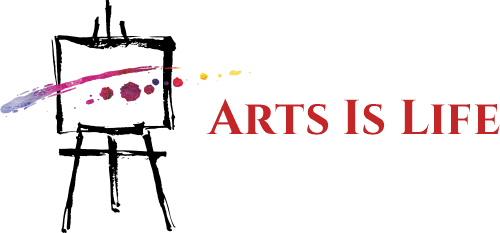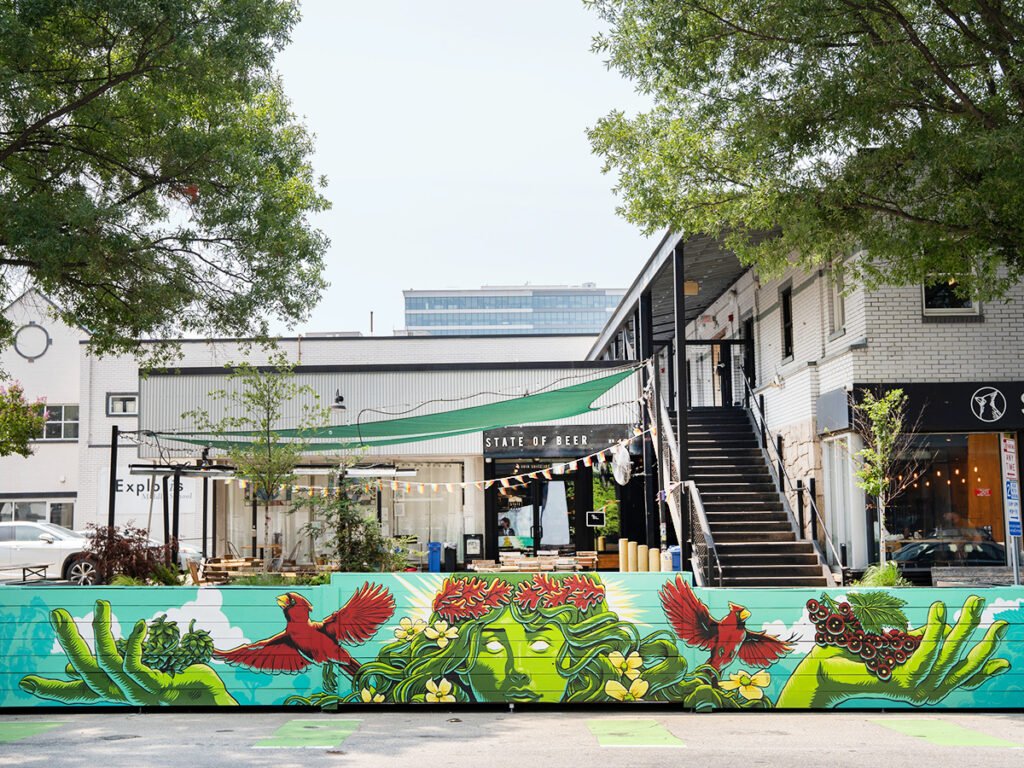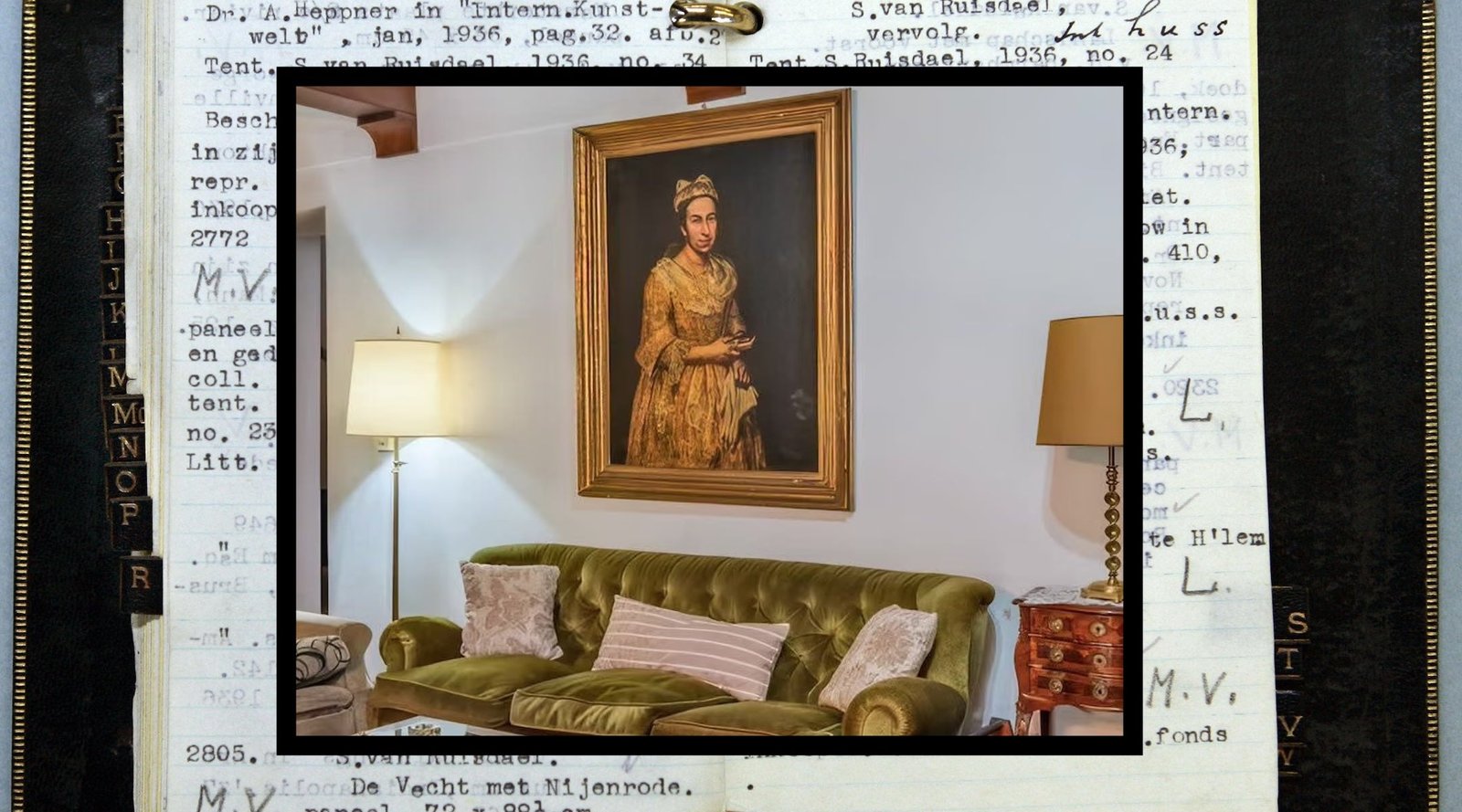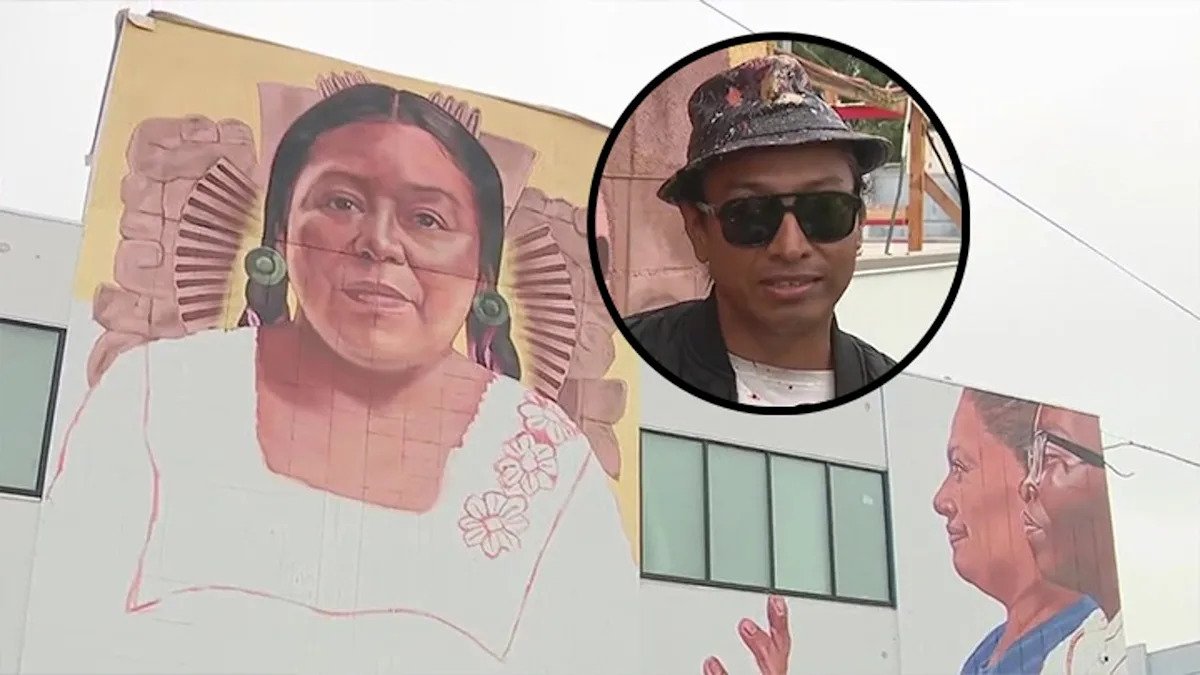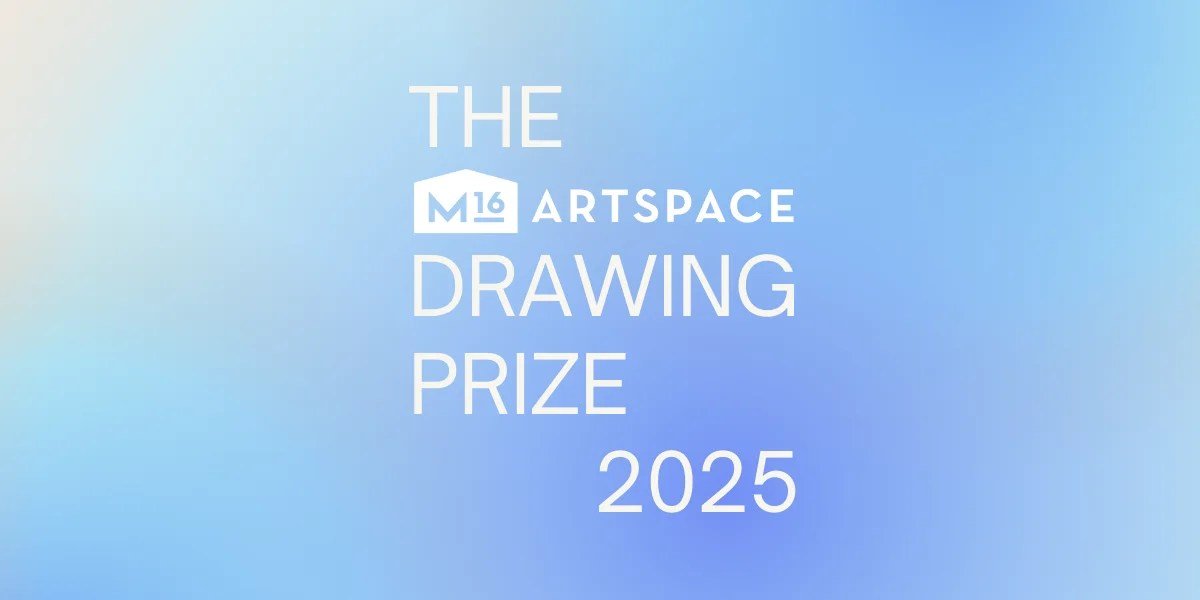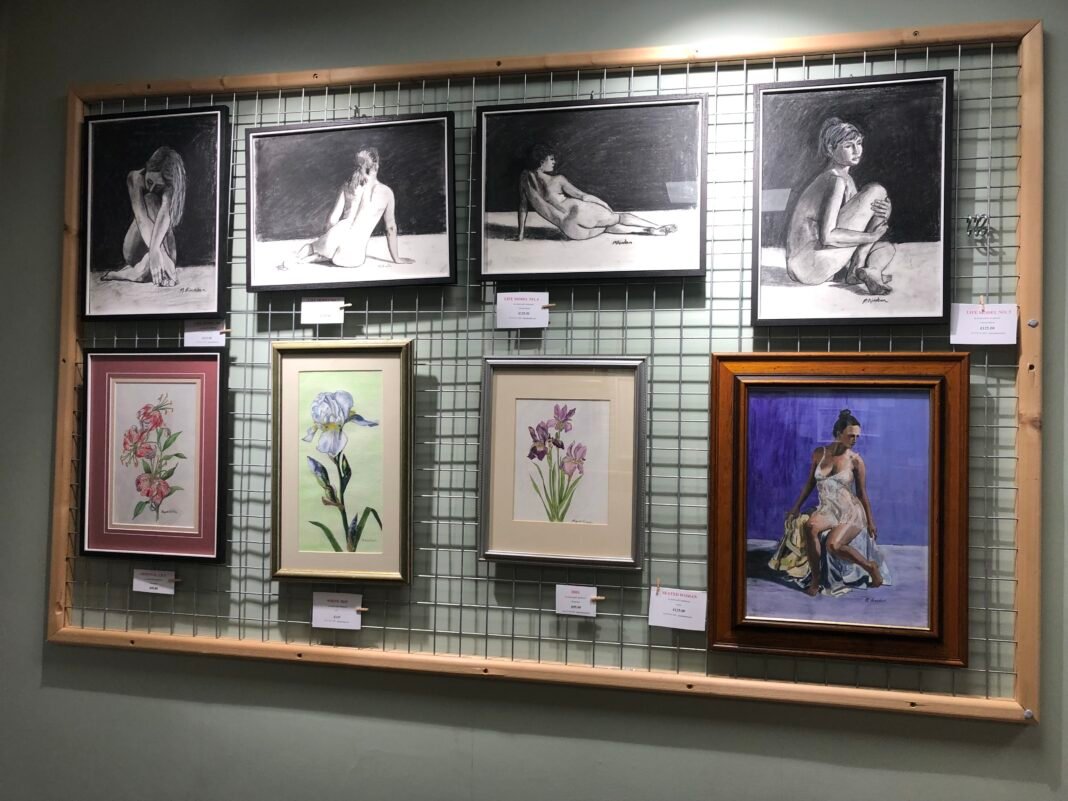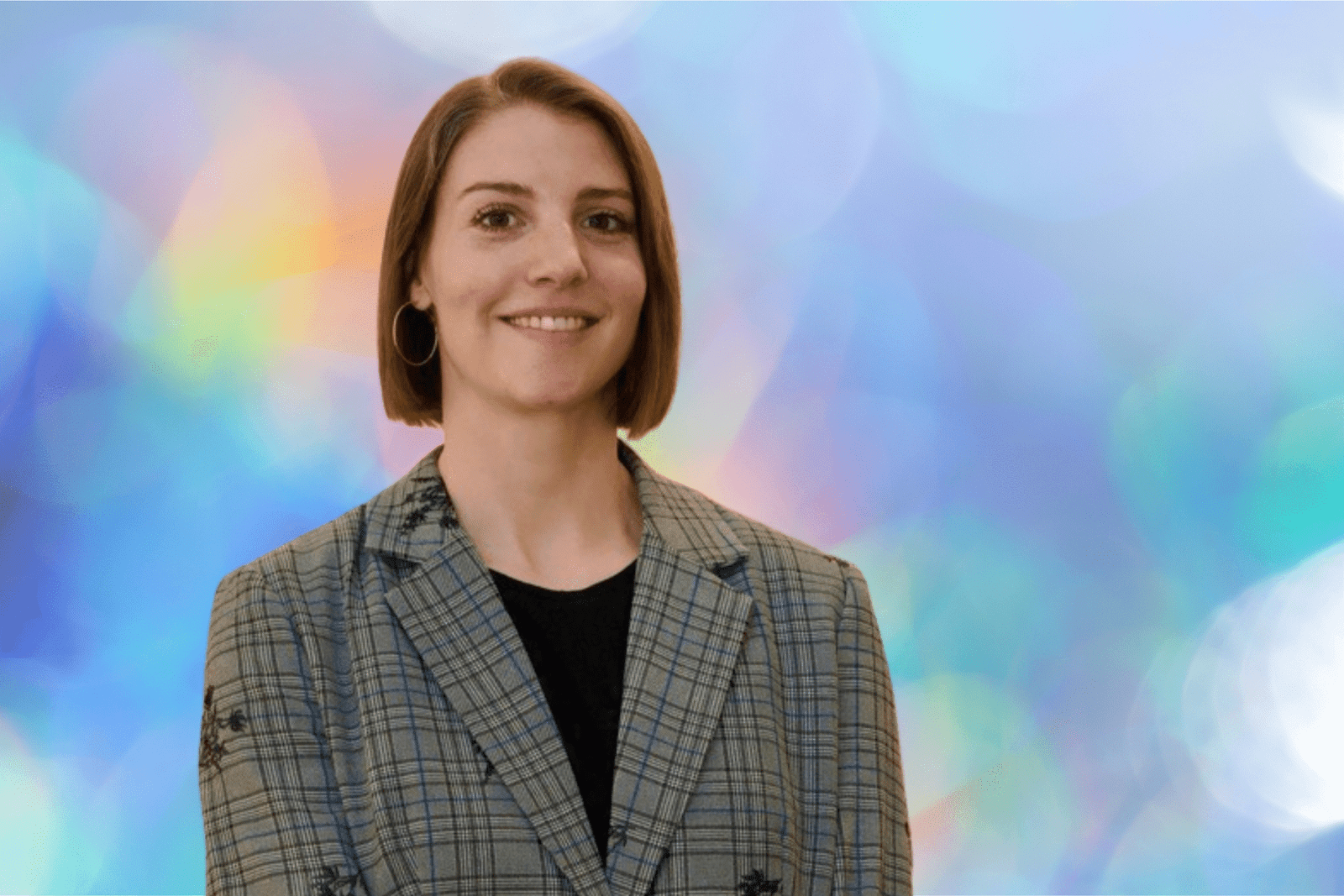For a week in June, multimedia artist Sarahlaine Calva’s hands made careful strokes of various lines and shapes using cans of spray paint as paint splattered on her pants in a chaotic arrangement. She was working on her mural for Virgil’s Cocktails and Cocina’s wooden streetery, an outdoor seating area located outside local businesses.
“Part of my creative process of making murals is that I get really messy and it’s really hard not to get paint on myself,” Calva says.
This summer, North Carolina-based artists are bringing their art supplies and beat-the-heat essentials to downtown Raleigh to paint vibrant murals on select wooden streeteries. The painted structures are the latest collection of public art installations downtown.
Artists began working on their murals in May, and so far, six of 11 have completed them for the “Murals on Downtown Streeteries Project.” A partnership between Raleigh Arts, the Office of Special Events, and the Transportation Street Maintenance Team, the project aims to prevent future vandalism of streeteries.
Several streeteries were vandalized with graffiti tags in December 2023, and to take pressure off businesses to maintain them, the City of Raleigh searched for a long-term solution, Rachel Bain, the hospitality and nightlife planner for the city, says. The businesses received the streetery makeover at no cost.
“We have heard, and then Raleigh Arts helped confirm, that sometimes a blank canvas of something like the streetery, a long structure with nothing on it, could be inviting for things like tags,” she says. “But having a mural in place would deter future behavior.”
The city opened applications for the project in January, and interested artists had to meet qualifications such as a minimum of three years of professional practice to be eligible. According to Jenn Hales, the city’s public art coordinator, 290 artists applied—the most of any public art project the city has undertaken.
“It was really difficult; there are so many talented folks,” says Hales about helping select the eleven artists.
A selection panel, city staff, and business owners collectively decided on the business-artist pairings. Each artist has a week to finish their mural and $4,800 from the city to cover the cost of designing their mural, materials and supplies, and any additional expenses such as travel. Later this summer, two artists will receive larger stipends for the time and materials needed to create longer streetery murals.
Hales says the city aims to complete the streetery murals by this fall and is excited for future projects that will continue to grow downtown’s local art scene.
Downtown Raleigh’s public art projects allow artists to apply individually or as a team. In June, artists Raymond Henderson and Jun Vasconcelos created their streetery mural, “Love,” for sports bar Woody’s.

The pair is based in Greenville, NC, and has painted murals together for approximately one year. This streetery project marks the first time the artists have done a mural outside Pitt County.
Despite their differing art styles in their personal artwork—Henderson typically strays away from bright colors, and Vasconcelos embraces them—the artists like to blend them in their mural work, including “Love.”
For a day and a half, the artists worked on “Love” using spray paint and acrylic paint. Vibrant colors, geometric shapes, and patterns stretch across the streetery, with one red flower on the left and right side. At the center of the piece, in large block letters, is the word “Love,” the letter “o” mimicking a human heart.
“Sometimes it’s a challenge for everyone in the world and everyone in the city to show love to each other,” Henderson says.
Raleigh-based muralist Anna Payne Rogers Previtte also finished her mural, “Of the Same Vine,” for Parkside Restaurant in June.

Rogers completed her first mural project in 2019 at Gateway Plaza and describes herself as an abstract geometric painter bordering on surrealism. Her artwork is starting to focus on themes related to the human body and biology. “Of the Same Vine” is one of Rogers’s first murals that explores biological forms illustratively.
The mural features vines that extend across the piece, connected by hands. Shades of orange, pink, and green blend into the hands and geometric shapes in the background. Rogers says the leaf motif represents all life forms and individuality that grows in community.
“I enjoy the natural world, almost biomimicry, how we learn from the way the world has evolved itself to work, about how to behave as humans,” she says. “I wanted to strengthen that connection to where the hands are part of that natural mind.”
Downtown Raleigh’s high foot traffic influenced Roger’s message of connectivity between all people in her mural. She says she enjoyed engaging with passersby while working on it.
Calva, who’s from Raleigh, also says the interactive aspect of creating her mural, “Archangel Lepidoptera,” for Virgil’s, was fun. She is known for her mural work, which she started about eight years ago, and has done several in the Triangle. Calva uses spray paint and acrylic paint, and she says her art style resembles pop art with a comic book feel.

Lepidoptera is the scientific order of moths and butterflies. Calva’s mural depicts half of a woman’s face with a large moth atop her head, red-painted fingernails, and wings with small eyeballs on either side. The woman’s gray eyes, Calva says, encourage curiosity, and her wings symbolize liberation.
“It [Archangel Lepidoptera] also invites people to ponder at life’s mysteries and embrace the transformative power of art,” she says.
Zac Bender, a Raleigh-based illustrator and muralist, painted one of the earliest streetery murals, “Mother Nature,” in May for State of Beer. His mural career began four years ago, and he has done projects in North Carolina and along the east coast.

Bender often uses nature motifs, such as bones and plants, in his artwork. “Mother Nature,” he says, represents Raleigh as a Mother Nature goddess. The center of the piece features a green goddess who wears a crown of oak leaves for the City of Oaks and has dogwood flowers in her hair, the state flower. On either side of her head is a cardinal, the state bird, and in one hand, she holds grapes. Her other hand holds hops to make beer.

He says adding public art downtown makes it feel more lively.
“When you’re surrounded by gray boxes everywhere, it’s easy to feel like you’re just a person in a city, like ants in a colony,” Bender says. “But when you’re surrounded by art, it feels like a place you’ve chosen to live; it feels more human.”

Comment on this story at backtalk@indyweek.com.
